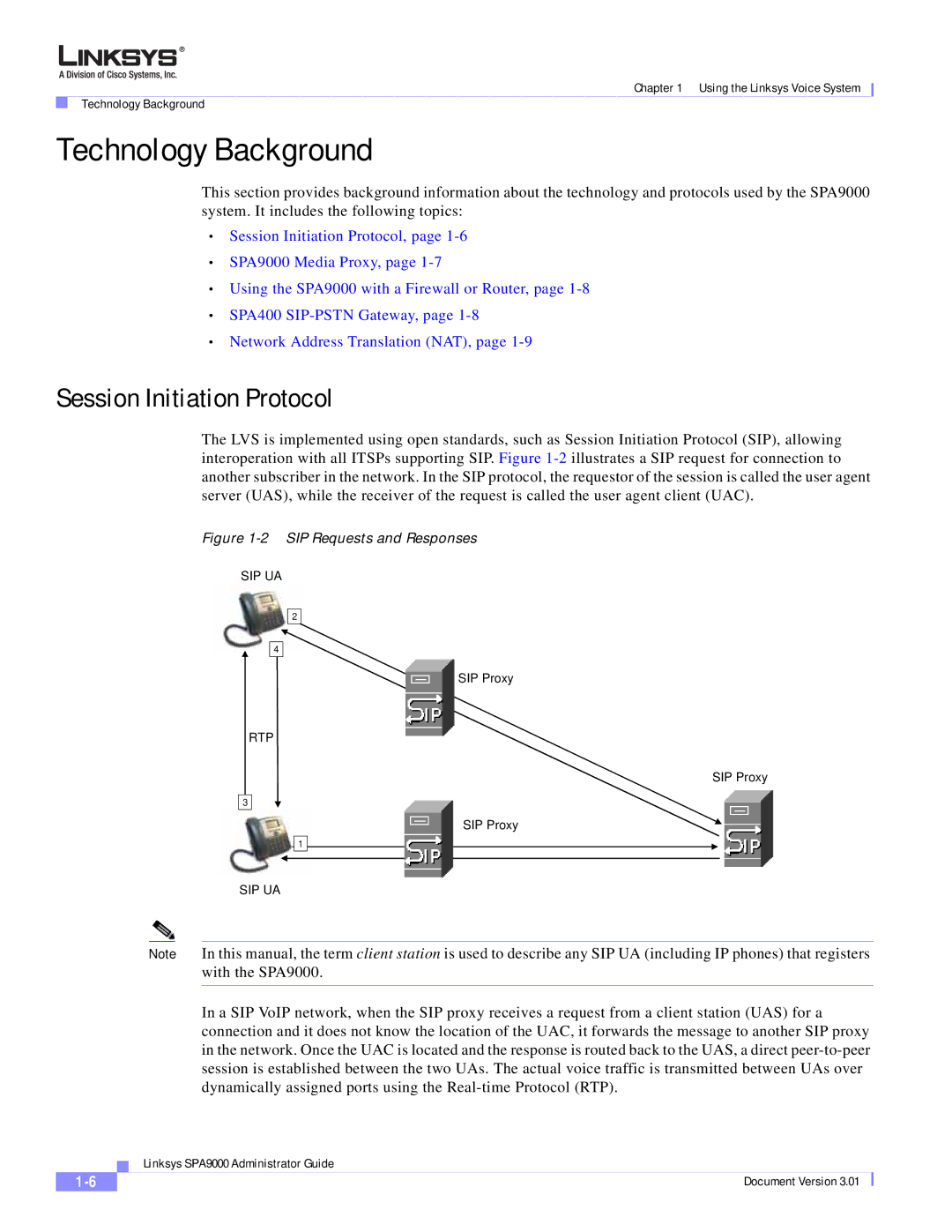
Chapter 1 Using the Linksys Voice System
Technology Background
Technology Background
This section provides background information about the technology and protocols used by the SPA9000 system. It includes the following topics:
•Session Initiation Protocol, page
•SPA9000 Media Proxy, page
•Using the SPA9000 with a Firewall or Router, page
•SPA400
•Network Address Translation (NAT), page
Session Initiation Protocol
The LVS is implemented using open standards, such as Session Initiation Protocol (SIP), allowing interoperation with all ITSPs supporting SIP. Figure
Figure 1-2 SIP Requests and Responses
SIP UA
2
4
SIP Proxy
RTP
SIP Proxy
3
SIP Proxy
1
SIP UA
Note In this manual, the term client station is used to describe any SIP UA (including IP phones) that registers with the SPA9000.
In a SIP VoIP network, when the SIP proxy receives a request from a client station (UAS) for a connection and it does not know the location of the UAC, it forwards the message to another SIP proxy in the network. Once the UAC is located and the response is routed back to the UAS, a direct
| Linksys SPA9000 Administrator Guide |
Document Version 3.01 |
